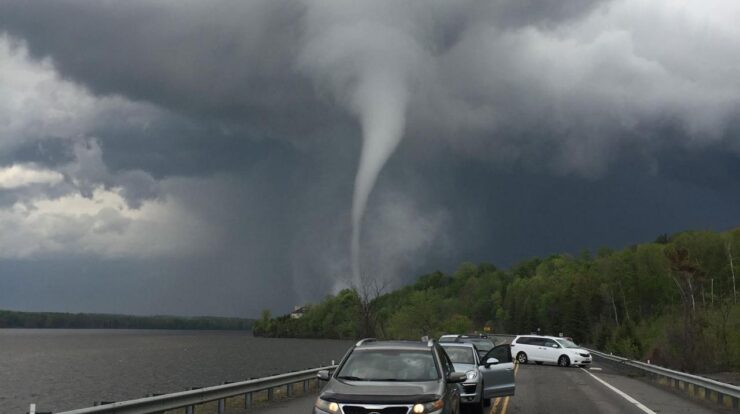
Tornadoes Today: Delving into the realm of these powerful atmospheric phenomena, we uncover their destructive force, intricate formation, and the crucial steps to ensure safety amidst their unpredictable path.
From their genesis in the clash of air masses to the devastation they leave in their wake, tornadoes captivate us with their raw power and remind us of nature’s unyielding fury. Understanding their behavior and implementing effective safety measures are essential for navigating the potential threats they pose.
Tornado Statistics

Tornadoes are a common and destructive weather phenomenon that can occur anywhere in the world. They are most frequent in the central United States, particularly in the Great Plains region known as “Tornado Alley.” According to the National Oceanic and Atmospheric Administration (NOAA), an average of 1,200 tornadoes are reported in the United States each year.
| Rank | State | Number of Tornadoes |
|---|---|---|
| 1 | Texas | 357 |
| 2 | Kansas | 298 |
| 3 | Oklahoma | 282 |
| 4 | Nebraska | 267 |
| 5 | Colorado | 246 |
Tornado Formation and Behavior: Tornadoes Today
Tornadoes form when warm, moist air from the Gulf of Mexico meets cold, dry air from the north. This creates an unstable atmosphere that can lead to the formation of thunderstorms. If the conditions are right, these thunderstorms can develop into tornadoes.There
are many different types of tornadoes, but they all share some common characteristics. Tornadoes are typically characterized by a funnel-shaped cloud that extends from the base of a thunderstorm to the ground. They can range in size from small and weak to large and powerful.The
structure of a tornado is complex and can vary depending on its intensity. However, most tornadoes have a central core of rapidly rotating air that is surrounded by an outer layer of less intense winds. The central core of a tornado can be as small as a few feet in diameter, while the outer layer can extend for several miles.The
lifecycle of a tornado can be divided into three stages: the formation stage, the mature stage, and the dissipation stage. The formation stage begins when a thunderstorm develops a rotating updraft. This updraft can then become a tornado if it becomes strong enough to reach the ground.The
mature stage of a tornado is when it is at its most powerful. During this stage, the tornado can cause significant damage to buildings, infrastructure, and vegetation. The dissipation stage begins when the tornado weakens and starts to lose its energy.
This stage can last for several minutes or hours.
Tornado Safety and Preparedness

Tornadoes can be extremely dangerous, but there are steps that you can take to prepare for and stay safe during a tornado warning.Before a tornado warning is issued, you should:* Create a tornado safety plan and practice it with your family.
- Identify a safe place to go in your home, such as a basement or interior room on the lowest floor.
- Gather supplies such as food, water, a first-aid kit, and a battery-powered radio.
When a tornado warning is issued, you should:* Take shelter immediately in your designated safe place.
- Stay away from windows and doors.
- Lie down flat and cover your head with your hands.
- If you are outside, lie down in a ditch or other low-lying area and cover your head with your hands.
Final Summary
As we delve deeper into the complexities of tornadoes, we gain invaluable knowledge that empowers us to face these formidable forces with greater preparedness and resilience.
By unraveling their secrets and embracing a proactive approach, we can mitigate their impact and safeguard our communities from their devastating wrath.
FAQs
What are the warning signs of a tornado?
Dark, rotating clouds, a funnel-shaped cloud descending from the base of a thunderstorm, and a loud, roaring noise.
What should I do if I am caught in a tornado?
Seek shelter immediately in a sturdy building, basement, or underground structure. Stay away from windows and exterior walls.
How can I prepare for a tornado?
Create an emergency plan, have a designated safe place in your home, and stay informed about weather forecasts.





